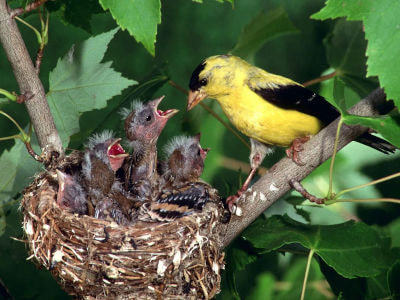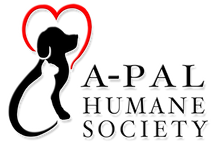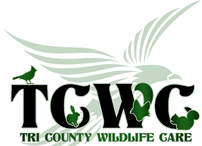Trimming your Trees? - Be Careful of Nests!

There’s no place like home!
Trees provide shade, cool us in summer, grow fruit and nuts, and for many species of wildlife, provide a home.
Living or dead, trees provide nest sites for so many species of wildlife. Trimming your trees at the wrong time can destroy a wildlife nest and injure or orphan baby wildlife.
Pruning at the right time, when the plant is dormant, results in less flowing sap to attract insects, a less risk of disease, and promotes better wound healing. Pruning at the proper time assures a healthy tree that will have good growth as the weather improves.
The best time to trim most of your trees is when they are dormant. Conifers should be pruned in late winter. Prune non-blooming trees and shrubs in late winter as well as summer-blooming trees and shrubs. Spring-blooming trees and shrubs should wait until after they bloom, but prune as soon as you can.
However, before you even get out the pruners and loppers, remember that this tree may be someone’s home. Raptors nest in the crowns of tall trees. Barn owls use holes in old trees (and sometimes nest boxes). Both raptors and owls are nesting now. Oak titmouse, like the barn owl, nests in a cavity of a tree. Bluebirds nest in a hole in a tree, living or dead. And every type of woodpecker will nest in a tree cavity. Squirrels build leafy nests in trees as well, and the nest is called a “drey”. All of these species and more are either using or building a nest just about now.
Nesting time for raptors and owls starts early – late winter to early spring. Songbirds start in early spring. Squirrels may start in December and continue through early summer.
Take a good look at that tree or shrub you are about to prune for nests. Remember, songbirds build small nests that can be difficult to see.
Look for bird poop on the ground and lower branches or birds flying away when you approach. Scrub jays will scold at you if you get too close to their nest. Also watch for birds and small mammals with nesting material or food in their beaks. If you see any of these signs, wait.
Waiting may be a couple of weeks to maybe a month. But waiting will ensure that wildlife has a chance to raise their young and give them the best start in life.
Every year, Tri County Wildlife Care receives birds and mammals that have been displaced by tree trimming. A little patience and a delay in pruning means that home sweet home stays in place long enough for wildlife to grow up.
Tri County Wildlife Care, a local nonprofit started in 1994, is dedicated to the rescue and rehabilitation of our native wildlife and helping our community live in balance with wildlife. They envision a world where wildlife and people thrive together. For more information call (209) 283-3245, or visit pawspartners.org.
Trees provide shade, cool us in summer, grow fruit and nuts, and for many species of wildlife, provide a home.
Living or dead, trees provide nest sites for so many species of wildlife. Trimming your trees at the wrong time can destroy a wildlife nest and injure or orphan baby wildlife.
Pruning at the right time, when the plant is dormant, results in less flowing sap to attract insects, a less risk of disease, and promotes better wound healing. Pruning at the proper time assures a healthy tree that will have good growth as the weather improves.
The best time to trim most of your trees is when they are dormant. Conifers should be pruned in late winter. Prune non-blooming trees and shrubs in late winter as well as summer-blooming trees and shrubs. Spring-blooming trees and shrubs should wait until after they bloom, but prune as soon as you can.
However, before you even get out the pruners and loppers, remember that this tree may be someone’s home. Raptors nest in the crowns of tall trees. Barn owls use holes in old trees (and sometimes nest boxes). Both raptors and owls are nesting now. Oak titmouse, like the barn owl, nests in a cavity of a tree. Bluebirds nest in a hole in a tree, living or dead. And every type of woodpecker will nest in a tree cavity. Squirrels build leafy nests in trees as well, and the nest is called a “drey”. All of these species and more are either using or building a nest just about now.
Nesting time for raptors and owls starts early – late winter to early spring. Songbirds start in early spring. Squirrels may start in December and continue through early summer.
Take a good look at that tree or shrub you are about to prune for nests. Remember, songbirds build small nests that can be difficult to see.
Look for bird poop on the ground and lower branches or birds flying away when you approach. Scrub jays will scold at you if you get too close to their nest. Also watch for birds and small mammals with nesting material or food in their beaks. If you see any of these signs, wait.
Waiting may be a couple of weeks to maybe a month. But waiting will ensure that wildlife has a chance to raise their young and give them the best start in life.
Every year, Tri County Wildlife Care receives birds and mammals that have been displaced by tree trimming. A little patience and a delay in pruning means that home sweet home stays in place long enough for wildlife to grow up.
Tri County Wildlife Care, a local nonprofit started in 1994, is dedicated to the rescue and rehabilitation of our native wildlife and helping our community live in balance with wildlife. They envision a world where wildlife and people thrive together. For more information call (209) 283-3245, or visit pawspartners.org.

